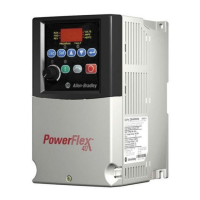
Do you have a question about the Rockwell Automation PowerFlex 40 and is the answer not in the manual?
| Frequency Range | 0-400 Hz |
|---|---|
| Input Voltage | 200-240V AC, 380-480V AC, 500-600V AC |
| Output Voltage | 0 to Input Voltage |
| Power Rating | 0.33 to 10 Hp |
| Control Method | Volts per Hertz |
| Communication Options | RS-485 |
| Enclosure Type | IP20 (Open Type) |
| Operating Temperature | -10 to 50 °C (14 to 122 °F) |
| Protection Features | Overcurrent, Overvoltage, Undervoltage, Ground Fault, Short Circuit |
Safety warning regarding high voltage capacitors requiring discharge time after mains removal.
Warning about potential damage or injury from incorrect use of Auto Rstrt Tries and Start At PowerUp parameters.
Emphasizes that only qualified personnel should handle installation and maintenance.
Highlights ESD sensitivity and the need for static control procedures during handling.
Warns about component damage or reduced product life due to wiring or application errors.
Details upright mounting, screw torque, DIN rail, and minimum clearance requirements for proper installation.
Lists acceptable ambient temperatures and corresponding enclosure ratings for drive operation.
Instructions on removing the MOV to ground jumper for specific distribution systems.
Directs users to the User Manual for details on Low Voltage and EMC Directives compliance.
Table detailing catalog numbers, power/input ratings, and branch circuit protection for various drive models.
Details the programmable output frequency range and typical drive efficiency.
Describes SRC/SNK modes for digital inputs, analog input impedance, and control output relay ratings.
Specifies recommended fuse types and circuit breakers for drive protection.
Summarizes motor protection, overcurrent, over/undervoltage trips, and ride-through capabilities.
Mentions the inclusion of an internal brake IGBT for dynamic braking applications.
Lists recommended copper wire types and insulation ratings for power connections.
Illustrates terminal block connections for B and C frame drives, including motor and DC bus connections.
Provides specifications for maximum/minimum wire sizes and torque for power terminal blocks.
Details input power conditions and recommended corrective actions like line reactors or isolation transformers.
Recommends specific wire types, shielding, and insulation for control signal wiring.
Specifies wire size limits and torque values for control I/O terminal blocks.
Visual representation of control terminal connections, including digital inputs, outputs, and analog signals.
Explains the function of Terminal 01 and the ENBL jumper for start/stop control.
Details wiring configurations for two-wire and three-wire control methods, including direction changes.
Advises on using recovery diodes for opto outputs connected to inductive loads like relays.
Describes the normally open and normally closed contacts of the output relay (R1, R2, R3).
Explains settings for analog output type and connections for 0-10V and 4-20mA analog inputs.
Details functions of digital inputs, opto outputs, and RS485 communication terminals.
Lists parameters associated with specific control terminal functions and inputs.
Critical safety warning for qualified personnel regarding live voltages during start-up.
Step-by-step checklist to confirm input connections, AC line power, digital control power, and DIP switch settings.
Instructions for applying AC power and getting familiar with the integral keypad before parameter configuration.
Explains that default settings allow control via the integral keypad without programming.
Describes the alphanumeric display, status LEDs, and available menu groups (Display, Basic Program, Advanced Program, Fault).
Explains the meaning of different LED states (Steady/Flashing Red/Green) for run, program, and fault status.
Details the function of each keypad key (Escape, Select, Arrows, Enter, Potentiometer, Start, Reverse, Stop) for navigation and control.
Steps to view parameter numbers, enter group menus, and scroll through parameters.
Process for entering program mode, flashing digits, changing values, and saving or canceling edits.
Instructions on how to exit parameter editing mode and return to the parameter list or main display.
Table detailing display group parameters, their min/max values, and options.
Parameters for setting motor nameplate voltage, frequency, and overload current for basic setup.
Parameters for setting minimum/maximum frequency, speed reference source, and start control scheme.
Parameters for setting the drive stop mode and the source of the speed reference.
Parameters for accel/decel times, resetting defaults, voltage class, and motor overload retention.
Parameters for configuring the function of digital inputs (I/O Terminals 05-08).
Parameters for configuring the function and level of the output relays.
Parameters for opto output levels and analog output selection and scaling.
Parameters for secondary accel/decel times and preset frequency selections.
Configuration for jog frequency and a table detailing input states for preset frequency selection.
Parameters for voltage boost, current limit, and motor overload selection.
Parameters for configuring auto-restart attempts, delay, start-at-power-up, and reverse disable.
Parameters for flying start enable, compensation types, and software current trip settings.
Parameters for clearing faults, locking programs, and configuring communication node addresses and data rates.
Parameters for scaling analog inputs and configuring PID loop gains, times, and deadband.
Parameters for slip frequency, stall fault time, and analog input loss behavior.
Parameters for selecting torque performance mode, bipolar input enable, and autotune functions.
Parameters for electromagnetic brake delay, MOP reset, and dynamic braking threshold.
Lists various fault codes (F2-F81) and their descriptions, indicating potential causes like input voltage, motor issues, or communication.
Details fault causes for specific codes such as Auxiliary Input, Overvoltage, Motor Stalled, and Heatsink Overtemp.
Instructions on how to clear faults by pressing Stop, cycling power, or using the Fault Clear parameter.
Table showing frame sizes (B, C) and corresponding kW/HP ratings for different voltage/phase configurations.
Diagram and table detailing the physical dimensions (A, B, C, D, E, F) and ship weights for drive frames.
Details dimensions and mounting for optional communication covers and EMC filters for B and C frames.
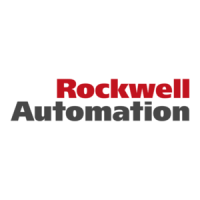





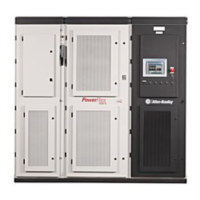

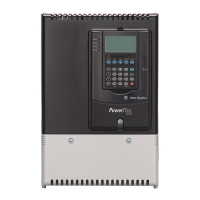
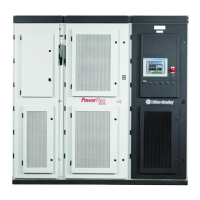

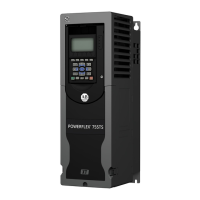
